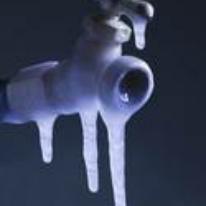It is coming and it can’t be stopped. Its wrath can be devastating to your home. The cost to repair the damage can destroy your household budget and decimate your family’s savings fund. There is nothing we can do about it. It hits us every year.
Winter. Why should you think about the winter now? Not too many of us have the spare time to do more than one item per weekend from the “honey do” list. There are 9 weekends between now and winter. Subtract the number of weekends you already have things planned that you’d rather not do; factor in the weekends you hope to go play outside in the fresh air; then guesstimate how many “surprise” weekends you’ll spend entertaining the in-laws. You’ll find that you have very little time for only a handful of projects. How do you prioritize?
The fixes and improvements we should do now that will benefit us most during the winter aren’t usually realized until it is actually winter. Getting ready for winter isn’t only about preventative measures. Be proactive. Consider some of things that you can do now that will make your winter life a whole lot better later.
Bee and Jay Plumbing strongly recommends you do not wait until it’s too late to winterize your indoor and outdoor plumbing.
 If you live in your home throughout the winter, there should be little need to winterize your plumbing. However, there may be places that are subject to freezing in crawl spaces or in pipes in poorly insulated exterior walls. Freezing water in a pipe under pressure can cause the pipe to burst which has severe damage potential (think about what’s under those pipes). For these areas simple insulation and/or heat tape may do the trick. Generally, you should not worry too much about freezing in drain pipes, except in the traps, beneath sinks, tubs, and showers, they do not hold enough water to cause damage if frozen.
If you live in your home throughout the winter, there should be little need to winterize your plumbing. However, there may be places that are subject to freezing in crawl spaces or in pipes in poorly insulated exterior walls. Freezing water in a pipe under pressure can cause the pipe to burst which has severe damage potential (think about what’s under those pipes). For these areas simple insulation and/or heat tape may do the trick. Generally, you should not worry too much about freezing in drain pipes, except in the traps, beneath sinks, tubs, and showers, they do not hold enough water to cause damage if frozen.
If you have a vacation home that you are leaving for the winter, or are going to be out of town for a few weeks during the winter, we suggest taking further steps to winterize your plumbing, including fixtures (toilets, sinks) and outdoor hose spigots. There are some things you can do without the assistance of a plumber, if you have a whirlpool tub with an air-pump turn it on for a few moments to empty any water that may have gotten into the jets. In the laundry room, shut off the valves to the wash machine. Drain the hoses and then drain any water that may still be in the washer itself. You can do this by briefly activating the pump-out cycle of the wash machine.
If you do not already have one, it is a good thing to have a faucet installed as low down as possible in your fresh water system. This will allow you to drain all of the fresh water out of the system when not in use. As long as most of the water has been drained out of the system, there is no real need to flush the system with anti-freeze.
However, you might pour a bit of antifreeze into drains where there are traps. Traps are those curves in the pipe under the sink. They hold water as a means of preventing fumes coming back up the pipe and into the house. Instead the fumes go up the stack and out of the house at a point above the roof. Water can freeze in the trap, but a bit of anti-freeze should prevent this in all but the coldest conditions.
If you have a boiler for your heating system it is a good idea to run the heat system through a cycle or two to check for air in the system. If you hear banging (not ticking) or the sound of rushing water, it may be time to bleed a radiator or two.
The harsh cold winter and all of its devastation will be here soon. As the fleeting warm weekends between now and then fly by, make your defense plan and prepare. It could prevent you from having to climb the ladder in a sub-zero snowstorm, and save your house along with your wallet.
